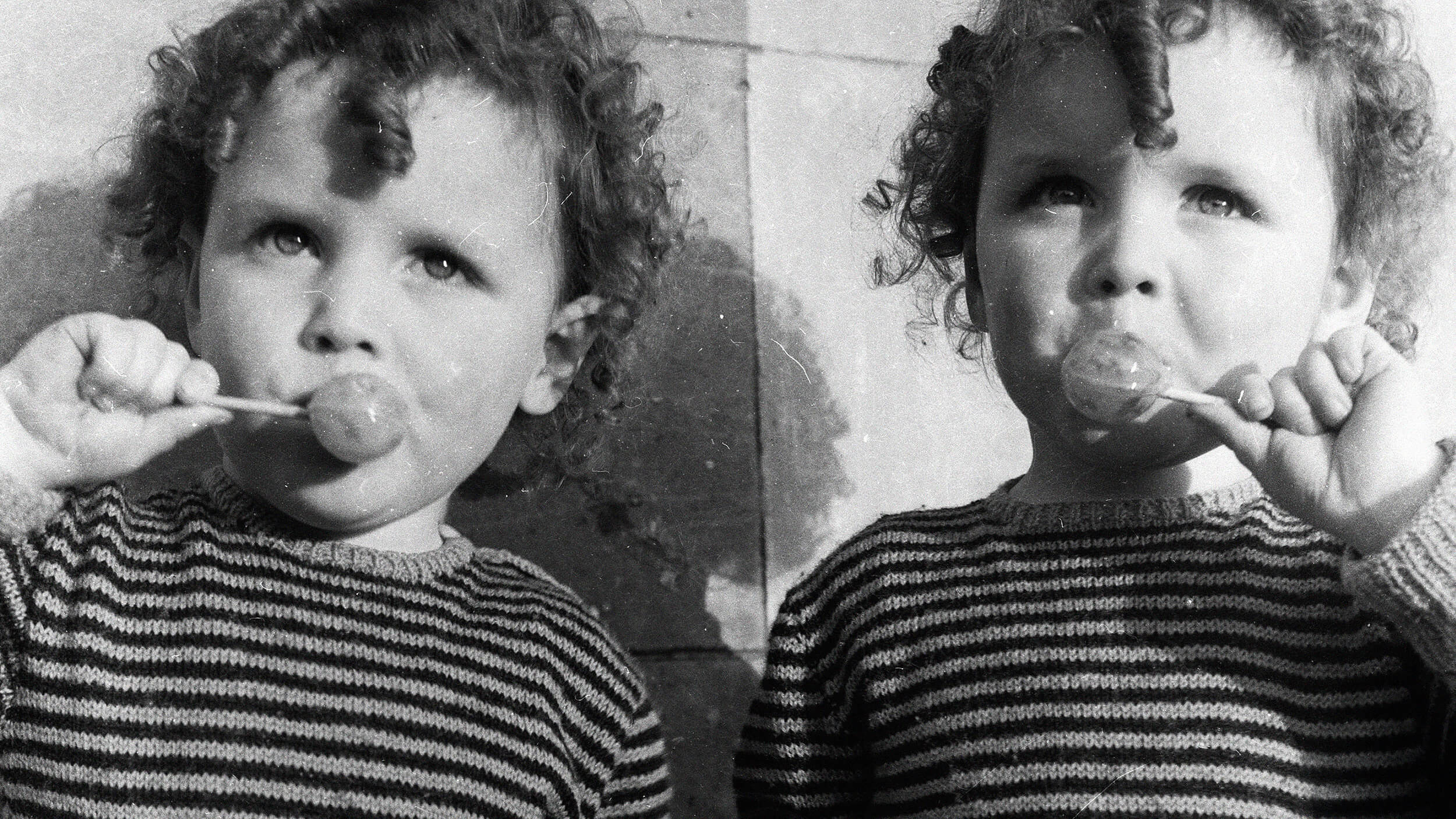5 unusual, evidence-based ways to get better at a new language

The last time I tried to learn a foreign language, I was living in an Italian suburb of Sydney. My hour a week at a local Italian class was inevitably followed by a bowl of pasta and a few glasses of wine.
As an approach to language-learning goes, it was certainly more pleasurable than my German lessons at school. Despite the wine, it was also surprisingly effective. In fact, getting better at a new language doesn’t have to mean hard hours on lists of vocab and the rules of grammar. It turns out that what you don’t focus on matters, too. And a glass of wine may even help …
Listen to the language, even if you don’t have a clue what’s being said – and you’re not even paying close attention
One challenging aspect to learning a new language is that it may contain distinct speech sounds that, as a non-speaker, you can’t even tell apart. This isn’t a problem for young children – they only need to spend time around the new language to learn to hear the different sounds, simply through passive exposure. It’s long been thought adults can’t do this, but a study published in 2019 brings a more optimistic message and has implications for the best approach to adult language learning.
The researchers asked native Finnish-speakers to listen to Mandarin speech sounds while engaged in other tasks, and to do this for two hours a day on four consecutive days. Critically, even when they were instructed to ignore the sounds and focus on a silent movie, recordings of their brain waves (via EEG) suggested they were getting better at differentiating between the different Mandarin speech sounds. “For the first time, these results demonstrated that mere passive exposure to sounds can induce plastic changes related to change detection in the adult human brain, which was previously thought to happen only in infancy during the sensitive period,” the researchers wrote.
The researchers added that this suggests passive training may help real-life language learning. They recommend listening to a language you want to learn while you’re doing something else (as long as it’s not too cognitively demanding) – while working out at the gym, or while cooking, perhaps.
A passive approach to learning could also be especially beneficial to older adults in the context of remembering new vocab. A 2013 study led by Lynn Hasher at the University of Toronto showed that older adults have a greater tendency than younger adults to process distracting information. While this isn’t usually helpful, it does make them more likely to remember background information. This suggests that after a session of deliberately learning new vocab, hearing those words played in the background could help with learning.
Don’t try too hard with the grammar
Not only can children easily perceive the difference between a vast range of speech sounds, but they learn the grammar of a language more easily than adults too. It used to be thought that this advantage ends at about the age of seven. However, again the picture has become more optimistic of late. For instance, in 2018, a team involving Steven Pinker at Harvard University concluded that in fact, the advantage lasts about a decade longer. Once we reach adulthood though, it does become harder to get to grips with grammar and also the structural components of words in another language.
Part of the problem could be that adults’ more highly developed cognitive skills work against them. Consider a 2014 study by Amy Finn at MIT and colleagues that found the harder adults worked at the structure and use of units of an artificial language – such as root words, suffixes and prefixes – the worse they did. To learn this language “morphology”, “at least in this artificial language we created, it’s actually worse when you try,” Finn comments.
These findings supported a theory, put forward in 1990 by the linguist Elissa Newport, that adults struggle with this aspect of language-learning because they try to analyse too much information at once. So what can you do? If you’re listening to another language, don’t over-analyse it, Finn suggests. There was a condition in her study in which some of the participants had to complete an undemanding puzzle or do some colouring while they listened to the artificial language – and it’s telling that it was this group who performed best at acquiring the new grammar. It’s hard not to conclude that if you act like a child, maybe you’ll learn as effectively as a child, too…
Choose the right time of day – or night – to learn
Outside more formal educational settings, a lot of language classes tend to take place in the evenings, but it’s worth considering experimental findings that suggest this isn’t an optimum time for everyone, especially older people and teenagers.
For example, in a 2014 study, Lynn Hasher and her team found that older adults (aged 60-82) were better able to focus, and tended to do better at memory tests, between 8.30am and 10.30am, compared with 1pm and 5pm. Scans of their brains suggested this was because by the afternoon, their “default mode network” was more active – a neural state indicative of daydreaming. Among young adults, however, other neural networks more associated with focused attention remained active into the afternoon.
Evening learning probably isn’t ideal for teenagers either. In a study published in 2012, Johannes Holz at the University of Freiberg, and colleagues, found that 16- and 17-year-old girls performed better on tests of factual memory if they’d learned the material at 3pm than at 9pm.
However, another study, published in Psychological Science in 2016, suggests that evening learning can be beneficial – especially if you follow it with a decent night’s sleep, and a follow-up session the next morning.
French-speaking participants were split into two groups: one learned the French translations of 16 Swahili words in the morning, returning for a second booster session that evening; the others learned the translations in the evening with a booster session the following morning.
The group that learned the vocab in the evening, slept and then studied again the next morning out-performed the other group on all kinds of memory tests. The overnight group showed virtually no forgetting after one week (unlike the same-day learners, who’d forgotten, on average, 4-5 of the translations), and by the second session, they’d forgotten less than the same-day learners and were quicker to re-learn anything that they hadn’t remembered.
The researchers suspect that sleep soon after learning allowed for a greater consolidation of these memories than for the other group. The results suggest that scheduling two study periods, one for close to bed-time, the other soon for after waking, is an effective way to learn.
Take long breaks
The idea of taking as long a break as possible between learning some vocab and revisiting it sounds counter-intuitive. However, it’s worth considering a phenomenon called the “spacing effect” when planning your study schedule.
According to research published in 2007 by Doug Rohrer and Hal Pashler, you should aim to time the intervals between learning something and revising it based on when you’ll really need to recall it (for an exam, say, or a holiday) following a 10 per cent rule – i.e. you should space your revision periods at intervals of roughly 10 per cent of the total time you’d really like to retain those memories. If you’ve got a test coming up in a month, say, then you should revise what you learn today in about two or three days’ time. But if you want to remember something over the longer term, so that your performance peaks in a year’s time, then it’s sensible to revisit that information once a month. Why this rule should work isn’t clear, but it’s possible that having long gaps between learning, revision and retrieval tells your brain that this is knowledge you’ll be coming back to, so it’s worth holding for the long term.
The 10 per cent rule is only a rough guide, though. More recent research suggests the spacing effect works best when it is adapted to each individual’s progress. In a study published in 2014 in Psychological Science, Pashler and his team devised individual spacing plans for middle school pupils learning Spanish, based on the material’s difficulty level and how well the students did on early tests. They found that these individualised plans boosted test performance at the end of a semester by 16.5 per cent, and led to 10 per cent better scores than the “one-size-fits-all” 10 per cent spaced study plan.
Other research has backed up this counter-intuitive idea that, rather than being detrimental, taking a long break from a language that you’re learning might actually be beneficial. A study published in 2012 involved 19 people becoming proficient at speaking and comprehending an artificial language and then taking a three- to six-month break. Michael Ullman at Georgetown University and his team found that the group did just as well in grammar tests after this break as they had done right after first learning the language. In fact, after the break, their brain activity while processing the language looked more like the kind of activity you see when native speakers are processing their first language. Ullman thinks taking a lengthy break from an already learned second language can help the representation of the language to shift from a form of “declarative memory” to “procedural” – akin to playing an instrument or riding a bike. This was a small study involving an artificial language so more research is definitely needed, but as the researchers noted, their findings have “potentially important consequences for second language acquisition”.
Have a drink…
Alcohol is not exactly known for its brain-boosting properties. It impairs all types of cognitive functioning, including working memory and the ability to ignore distractions. So you’d think it would make it harder for someone to speak in a foreign language. However, a study published in 2017 by Fritz Renner and colleagues found that it doesn’t – if anything, it can be beneficial.
German volunteers learning Dutch who’d drunk enough vodka to achieve a blood alcohol level of 0.04 per cent (approximately equivalent to just under a pint of beer for a 70kg male) were rated by independent Dutch speakers as speaking the language more proficiently during a short-test (they had to argue in Dutch for or against animal testing), compared with the other participants who’d only drunk water beforehand.
Why? Perhaps because some people feel anxious when talking in a foreign language, and this was ameliorated by the alcohol. However, as Renner cautions: “It is important to point out that participants in this study consumed a low dose of alcohol. Higher levels of alcohol consumption might not have [these] beneficial effects.”
Emma Young (@EmmaELYoung) is Staff Writer at BPS Research Digest.
Reprinted with permission of The British Psychological Society. Read the original article.





